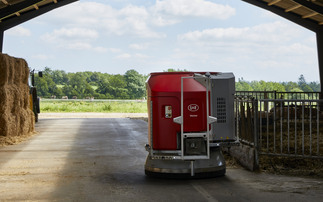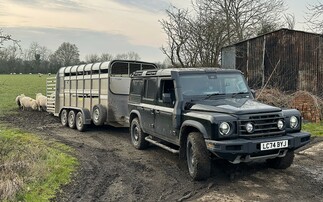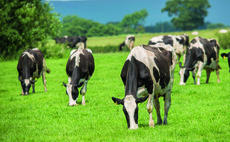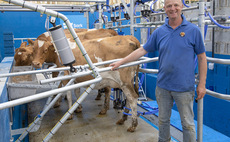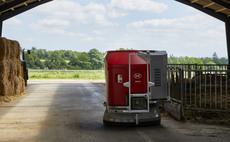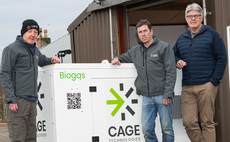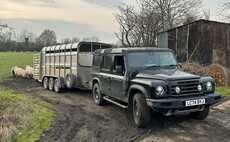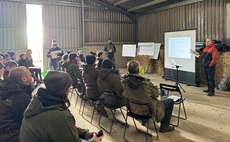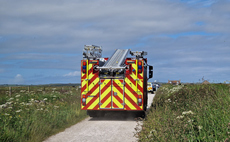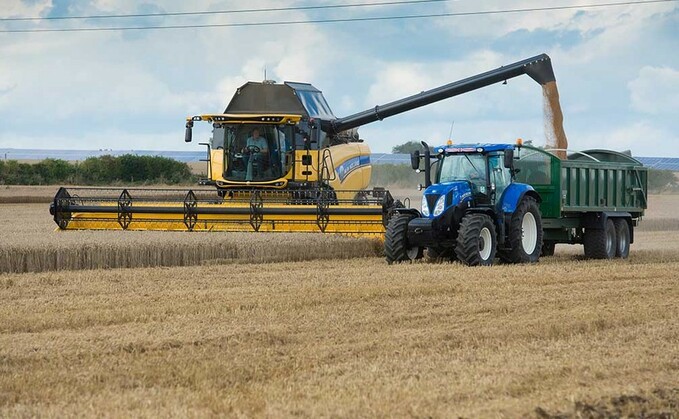
With its official reveal at last year's Agritechnica, we managed to catch up with New Holland's latest generation CX combine for a test drive, before the harvest season ended. James Rickard takes to the wheel.
It has been 14 years since its introduction and it is fair to say New Holland's range of CX straw walker combines has had a pretty decent career.
Granted, there have been plenty of updates along the way, mainly to boost efficiency and performance, but overall the original design concept has endured.
That evolution continues for 2016, with a raft of updates including a brand new cab, the incorporation of variable speed straw walkers and a spinning disc spreading unit, and cleaner and leaner engines.
CX models receiving the updates will initially be the larger CX7000s and 8000s. To identify the new generation of models, numberings are also changing - essentially substituting a ‘0' for a dot. For example, a CX8080 becomes a CX8.80.
In addition, a new model will be joining the line-up, the CX8.85, slotting in the range just under the flagship, satisfying the power hungry needs of additional options such as tracks and straw choppers.
Apart from the flagship CX, which does not need to yet, all new models meet Stage 4 emissions regulations using the firm's Hi-eSCR concept, diesel exhaust fluid-only solution.
To find out what is in store for potential 2016 CX customers, we took to the wheel of a mid-range CX8.80 with 360hp, six straw walkers and a 9.1m (30 feet) DualStream header.
Cab
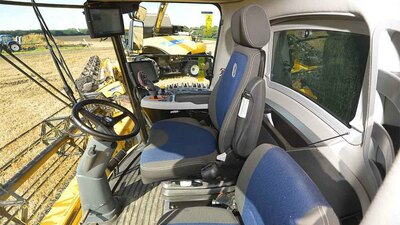
Starting with the most obvious change to the CX is the cab. Taken from the firm's CR rotary combines, it brings with it increased levels of comfort and operator convenience.
The first thing you really notice is how quiet it is, even with the combine running at full chat.
Visibility is also a notable aspect. With skinny A pillars and an increased area of glass, you can clearly see what is going on from one end of the header to the other. It also affords good views when hitching up the header.
Cab space is generous, and with plenty of cubby holes dotted around and a cool box positioned under the passenger seat, ample storage is provided.
Various operator seat options are available ranging from cloth trimmed to a ventilated leather perch. A neat touch is the easy rider bar, mounted at the base of the steering column, providing a footrest for the more laid back operator.
Controls
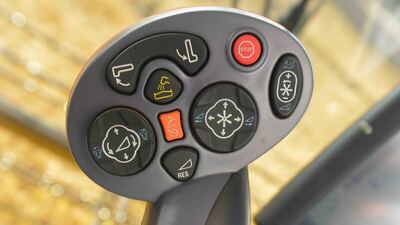
As for control logic, it is pretty similar as before and uses almost the same driving concept as found on all the manufacturer's medium and large combines, its range of self propelled forage harvesters and its line-up of AutoCommand tractors.
Control layout though, has been tweaked to make them more intuitive, now laid out in an ergonomically friendly arc.
For the main control lever, various stick modes now allow the combine to be driven in three different ways; factory mode, harvest mode and shuttle mode.
controls 2
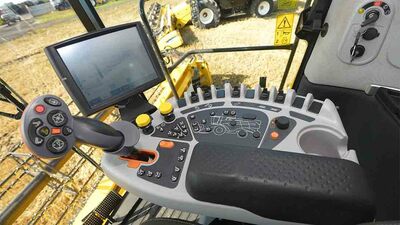
Factory mode is the default setting and requires the use of the consent button on the lever to get the combine moving, and when direction changes are made.
Harvest mode is activated automatically when unloading and allows you to shuttle backwards and forwards without having to use the consent button.
Finally, shuttle mode is the same as harvest mode, but is engaged all the time.
The combine's main 10inch touch screen terminal is now mounted on an arm which travels along rails which are fixed to the console. This makes it easy to put in a position of your liking, and when the combine is set up it can be slid out of the way.
Variable straw walkers
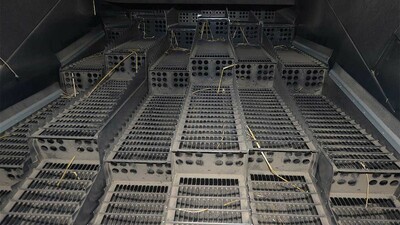
A major update of the machine is the introduction of variable straw walkers. Designed to keep a consistent flow of material travelling over the walkers for maximum separation, the system works by automatically altering the speed of the walkers depending on the gradient of the terrain.
Rather than settling on a fixed, compromised speed, which can often be too slow or too fast depending on gradient, drive to the walkers can vary from 170 to 240rpm, compensating for gradients up to 17 per cent.
In combination with the already existing OptiFan system, which alters fan speed depending on gradient, and the OptiClean system, which keeps chaff in the air longer via a double cascading drop, grain sample is impressively clean.
Spreading unit
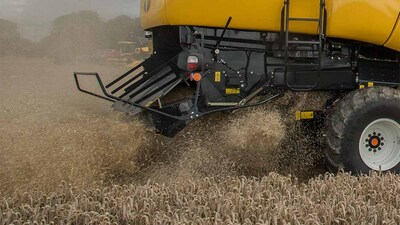
Another feature taken from the firm's CRs is the OptiSpread spinning disc spreading unit for chopped straw. As before, the chopper uses a combination of rotary knives working against a bank of stationary knives. However, instead of chopped straw being blown out the back and deflected via vanes, it is now dispersed by two spinning discs.
As a result, there is more control over the spread pattern allowing width to be altered, where the bulk of material is placed, and the ability to offset the spread pattern to compensate for wind. Two spread patterns can be saved via buttons in the cab and activated depending on which way up the field you are travelling.
Running gear

Fitted with bigger grain tanks and the ability to handle larger headers, it is just as well you can also specify the top four CX models with the firm's SmartTrax track units featuring TerraGlide suspension.
Belt width options include 610, 724 and 864mm (24, 28.5 and 34 inches) - the former giving the combine an overall width of 3.4m.
Suspension comes from two pairs of hydraulically suspended rollers working independently offering an almost floating-like ride quality, keeping the header stable.
Unfortunately, the SmartTrax option is not retro fit-able and must be specified as a factory fit option. And at a cost of £30,000, they are a bit of an eye watering luxury, but could aid residual values.
In addition, a new option is a two speed, powered rear axle offering two modes; high speed/low torque or low speed/high torque.
Verdict
It is fair to say the CX has had a good run, and with the recent updates, particularly the new cab and additions to its suit of grain separation and cleaning systems, it looks like that run is set to continue.
The old cab was not a bad place to work and the new one takes it to the next level, both in terms of usability and comfort.
Underneath, it has gained more than just a few tweaks too. The variable straw walker concept is a clever addition and the new straw spreading unit allows better control of residues.
For those using larger headers, the suspended track option makes a huge difference to quality of travel, as well as reducing compaction.
Overall, the CX is a hard combine to fault and New Holland has just made it that bit harder.








